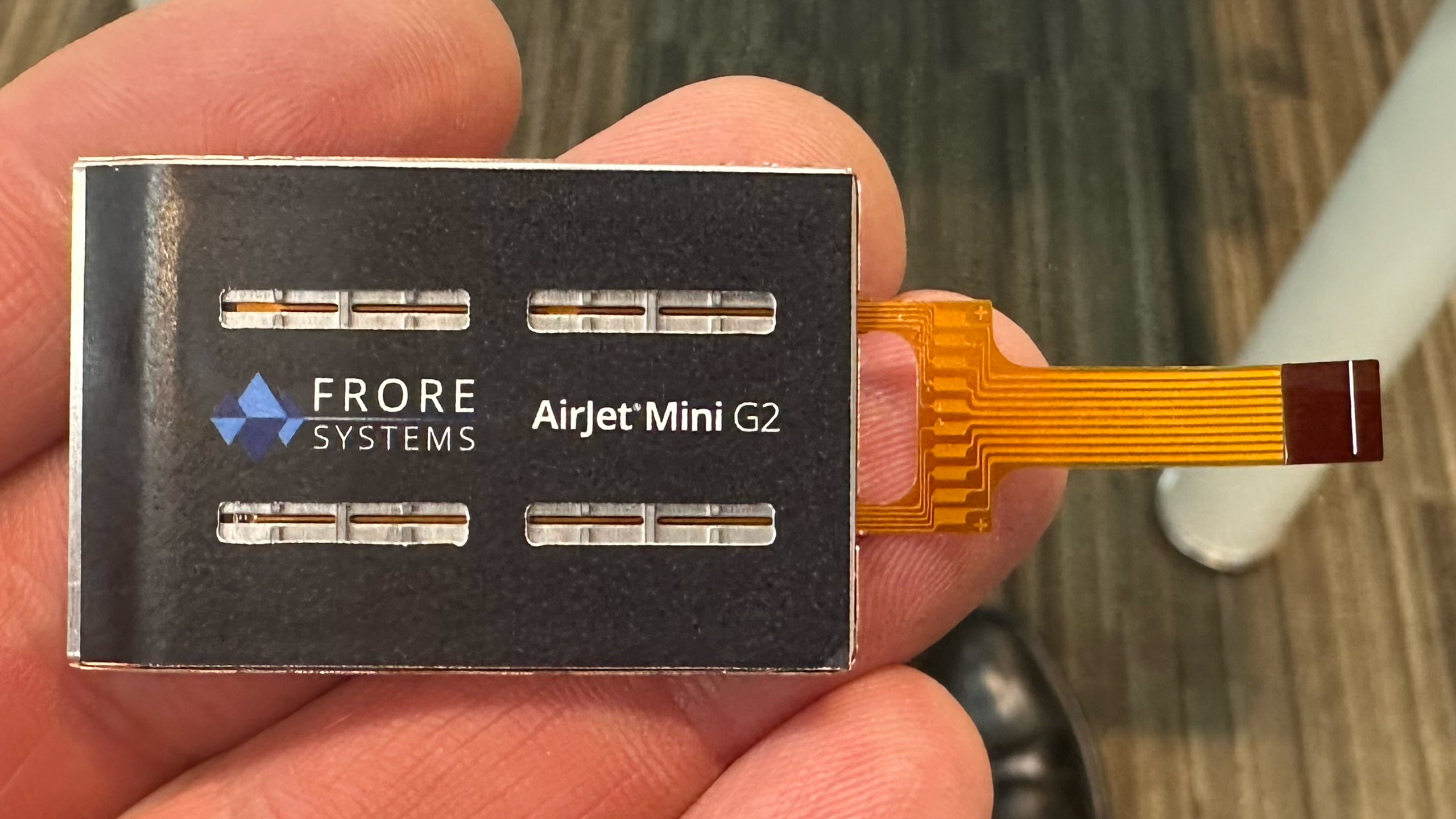
As our mobile tech gets thinner and more powerful, the need for advanced cooling solutions becomes increasingly important.
xMEMS, a company founded in 2018 that discovered success with its novel microspeaker technology, wants to provide that solution.
Announced in 2024, the XMEMS µCooling XMC-2400 is a tiny active fan that is expected to begin showing up in consumer mobile electronics in 2026.
How tiny, you ask? It's small enough to fit on your fingertip with plenty of space to spare.
As it stands now, with more traditional capabilities, manufacturers of mobile tech usually have to decide between active and passive cooling.
Passive cooling involves things like heatsinks, heatspreaders, and vapor chambers, depending on how much space can be spared inside a device.
These solutions are unpowered, and the devices that house them often don't require any venting. Think of your phone or the SSD in your laptop as examples of passive cooling.
This approach has also trickled down to modern thin and light Windows PCs like the Surface Pro 12-inch, which has no fans or venting for its Snapdragon X Plus chip and other components.
Active cooling, on the other hand, uses powered solutions to dissipate heat. Think of system fans or liquid cooling in a laptop or desktop PC as examples.
The current setup of active and passive cooling presents a problem; what can be done about thin and light devices that require active cooling to avoid overheating and thermal throttling? That's where the xMEMS XMC-2400 fan comes in.
The µCooling fan, which xMEMS says is "the world's first all-silicon fan-on-a-chip for thin, high-performance, AI-ready mobile devices," measures just 1.08mm thin, with a length of 9.26mm and a depth of 7.6mm.
The chip has eight tiny Piezo membranes that flap at a frequency high enough to produce 39 cubic centimeters per second of airflow and 1,000Pa of back pressure. That's no joke, as you can see in the demonstration video below.
Everything is built into one tiny silicon chip that is SMT-reflowable, meaning it can be soldered into electronics.
It produces no noise, and it comes with an IP58 rating for protection against dust and water. Its silicon construction should make it far more reliable than a traditional fan.
xMEMS plans to produce two versions of the chip, one with top venting and one with side venting, opening it up for use in more products. Beyond that, the fan offers bi-directional airflow.
xMEMS sees its XMC-2400 µCooling fan as an ideal solution for phones, tablets, VR headsets, external SSDs, wireless chargers, and laptops that are particularly thin and light.
The fan is so small that it could be added to practically any piece of tech that needs a bit of extra cooling.
Love to game on your phone? A future product with a tiny fan like this inside would no doubt provide much better sustained performance. Want to add a high-performance M.2 PCIe SSD to your compact laptop? The XMC-2400 would be able to prevent throttling without adding too much bulk.
xMEMS has competition from Frore's AirJet Mini G2

xMEMS isn't the only company working on minuscule cooling solutions. Frore Systems, which introduced its original AirJet Mini in 2023, has returned with an AirJet Mini G2.
Tom's Hardware covered the launch news, noting that the G2 version has improved its cooling capabilities by 50% without making it any larger than its predecessor.
It is, however, considerably larger than the xMEMS XMC-2400, measuring 2.5mm thin, 26.6mm deep, and 41.25mm wide. That's understandable, as it's made to handle larger components.
While the AirJet Mini G2 might not work in as many devices as the XMC-2400 due to its size, it's great to see more than one option on the market.
I expect tiny fans like these will one day become the standard in mobile electronics, and some competition will only benefit consumers.







